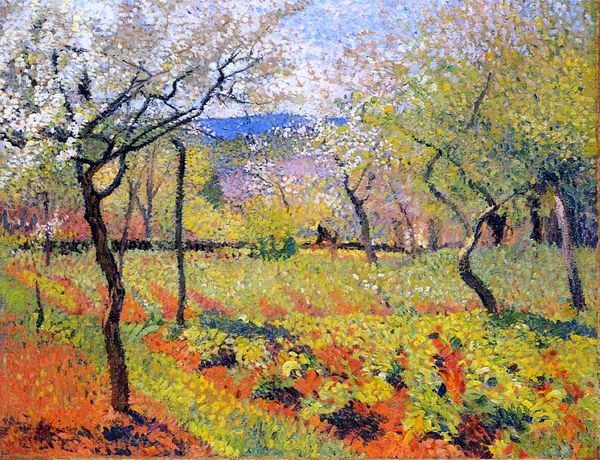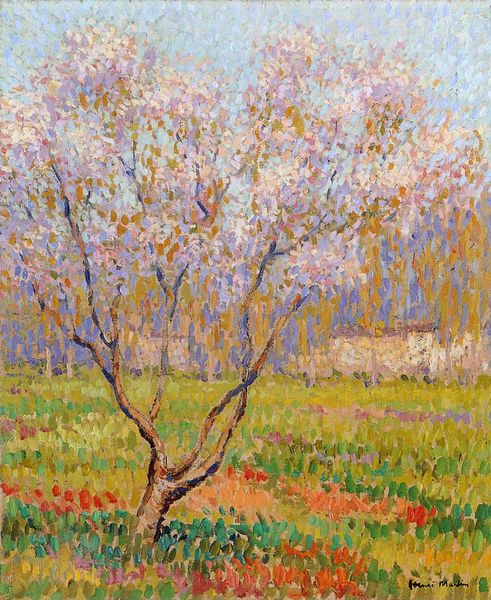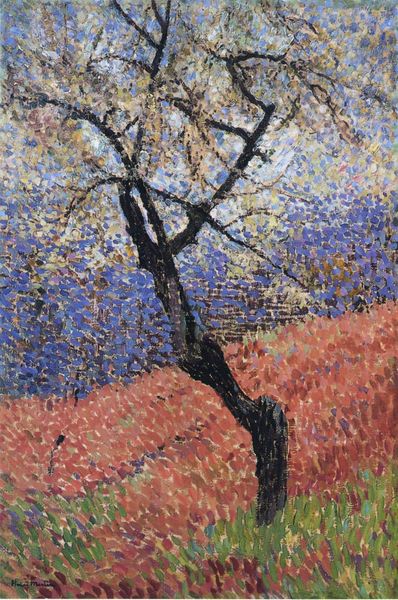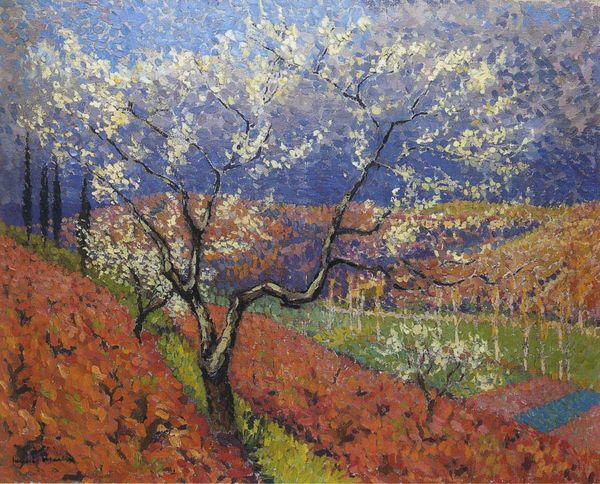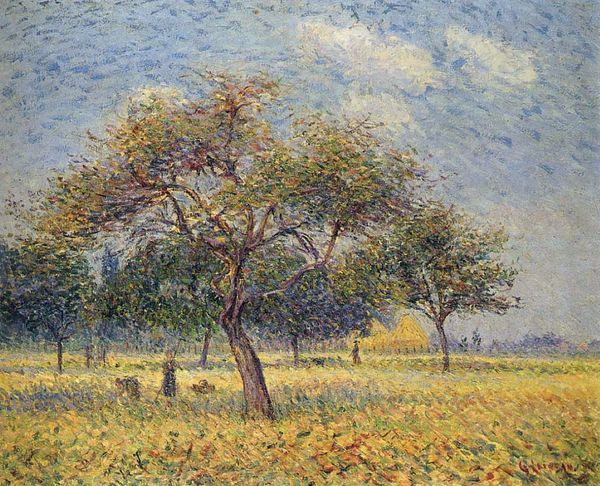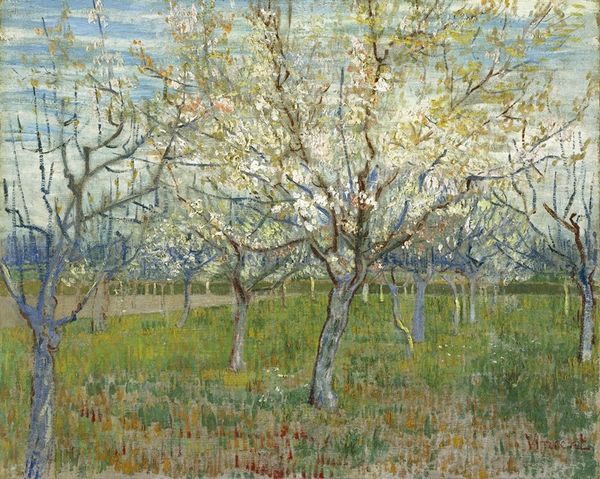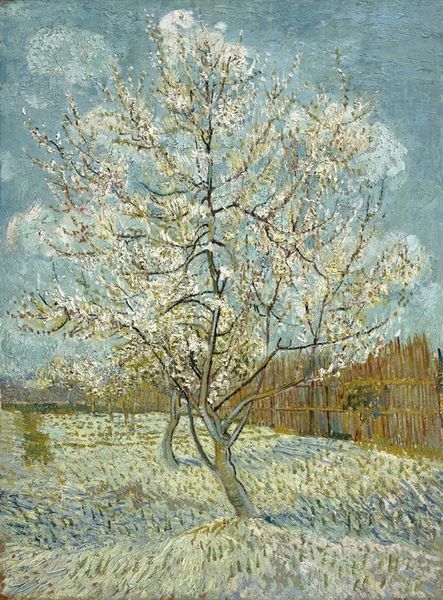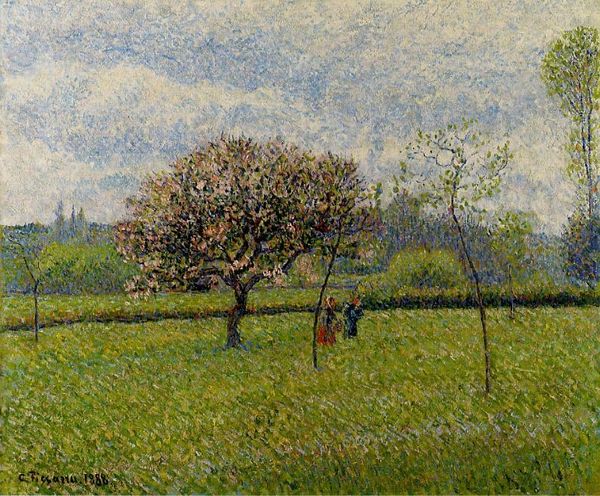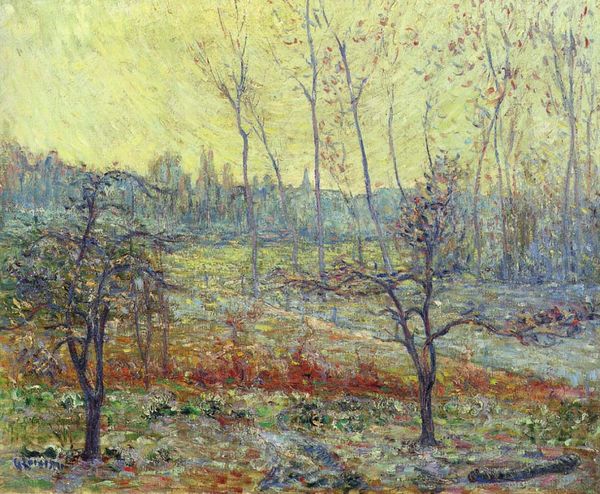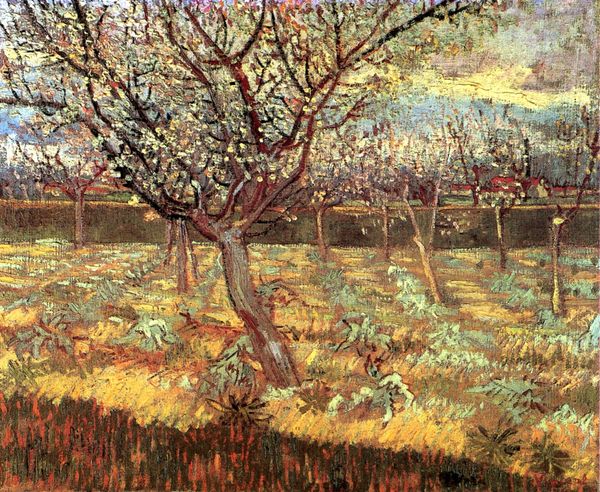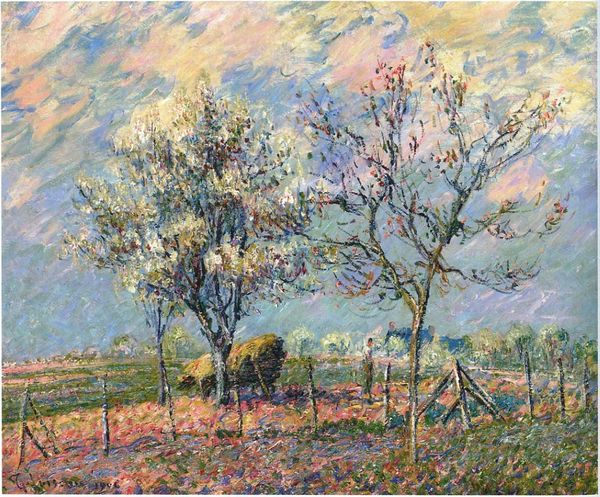
Copyright: Public Domain: Artvee
Curator: Looking at "Les Vieux Pruniers," or "The Old Plum Trees," an oil painting created around 1940 by Henri Martin, it strikes me as a peaceful scene of the French countryside. Editor: Yes, immediately you are drawn to this, almost joyful feeling from the blossoming trees, but if you look closely at the way the paint's been applied, in such a dense, textural way… it speaks of a much harder, material reality, doesn't it? Curator: Absolutely. Martin’s career spanned a period of enormous social and political upheaval in France. It is fascinating how this tranquility emerges from a history marked by conflicts between social classes and evolving cultural values, especially as painting transitioned from academic control toward more avant-garde movements. Editor: Considering its material presence, that impasto texture just screams "labor" to me. You can practically feel the artist's hand at work. He really piles up the paint to capture the rough texture of the bark. Curator: Well, yes, that use of divisionism or pointillism really defines the canvas. These myriad, tiny dabs of color blend in the viewer’s eye to give the painting such a warm, unified harmony. There’s an evocation of Impressionism. I am drawn in particularly by how it offers an idealized vision of rural France. Editor: I agree there's something romantic about that light-dappled surface but beyond the visual pleasure, there's also that direct engagement with materiality. Each touch carries intention, and together they construct a very physical scene. It becomes more about labor than beauty; one needs to focus not only on what is shown, but how the art has been wrought. Curator: In those years, these artists aimed to represent the life around them and the cultural atmosphere. To that end, it reveals much about societal aspirations. The very act of valuing the French landscape has deeper political implications, no? Editor: I believe understanding the relationship to materiality changes our understanding and that it is so essential to analyzing its value. The materiality is inextricable from the content itself. Curator: Yes. Overall, looking closely allows us to remember art does not develop in a vacuum but comes from cultural conditions and historical frameworks. Editor: Agreed; examining the tools, labor, and production of work leads to more understanding as well, it gives much more context and insight to understand artworks such as "Les Vieux Pruniers."
Comments
No comments
Be the first to comment and join the conversation on the ultimate creative platform.
